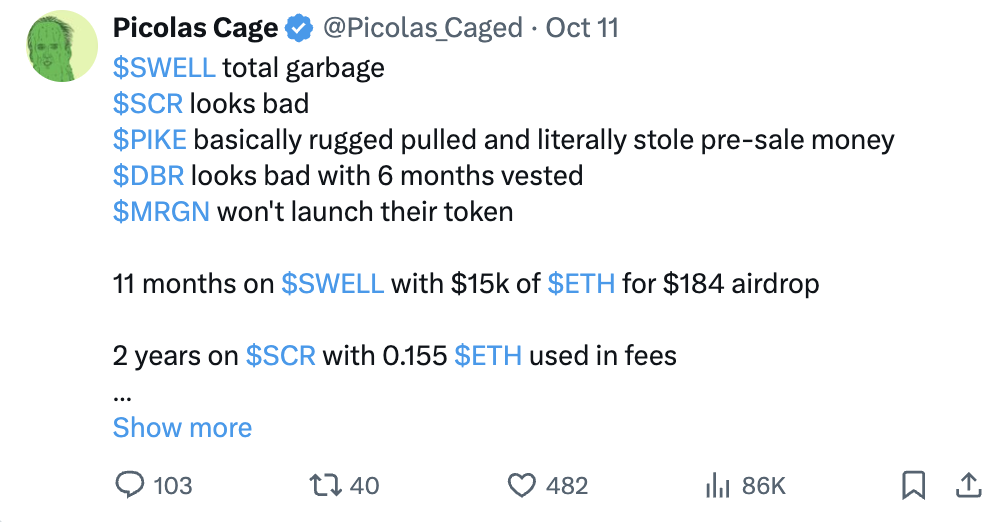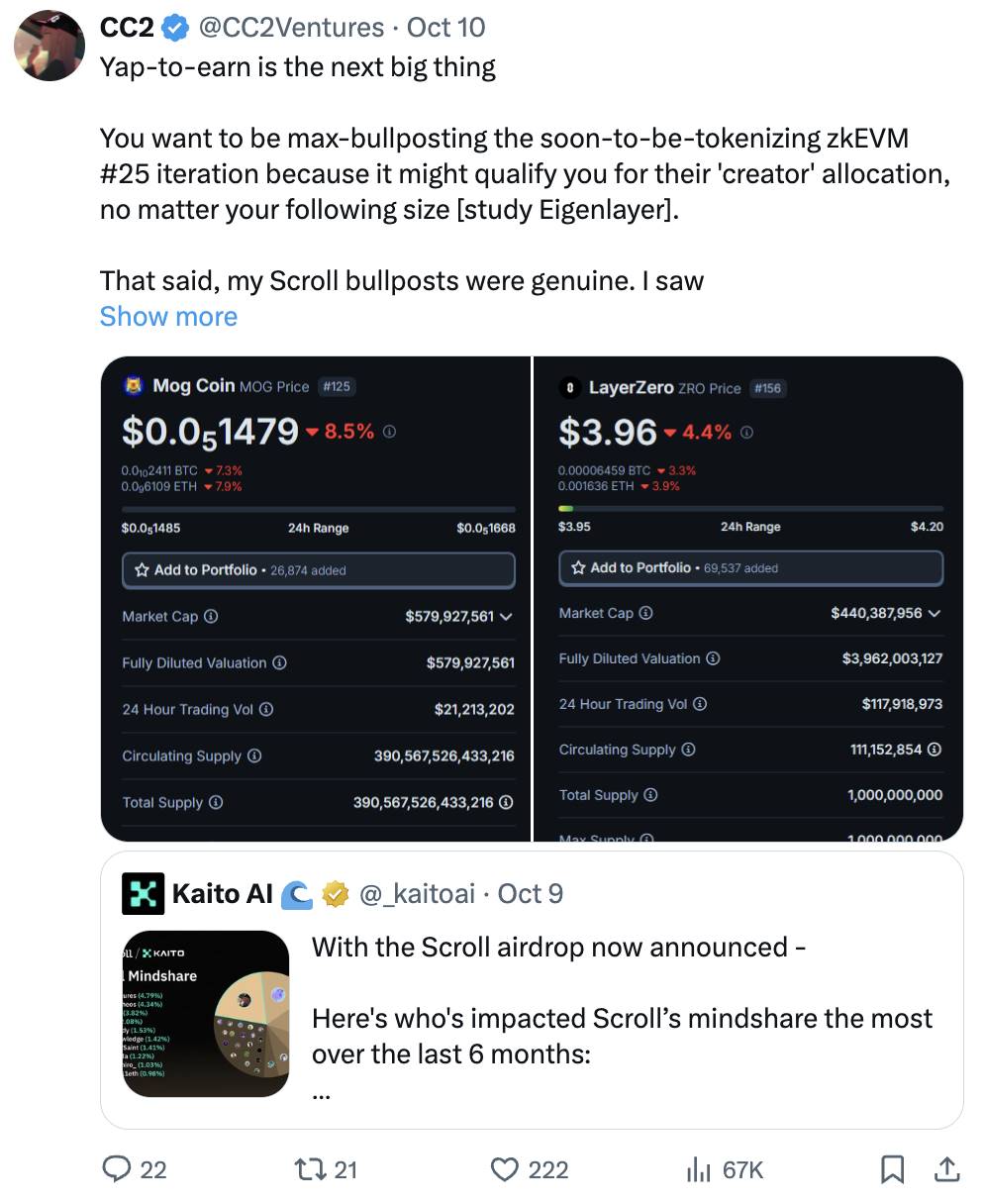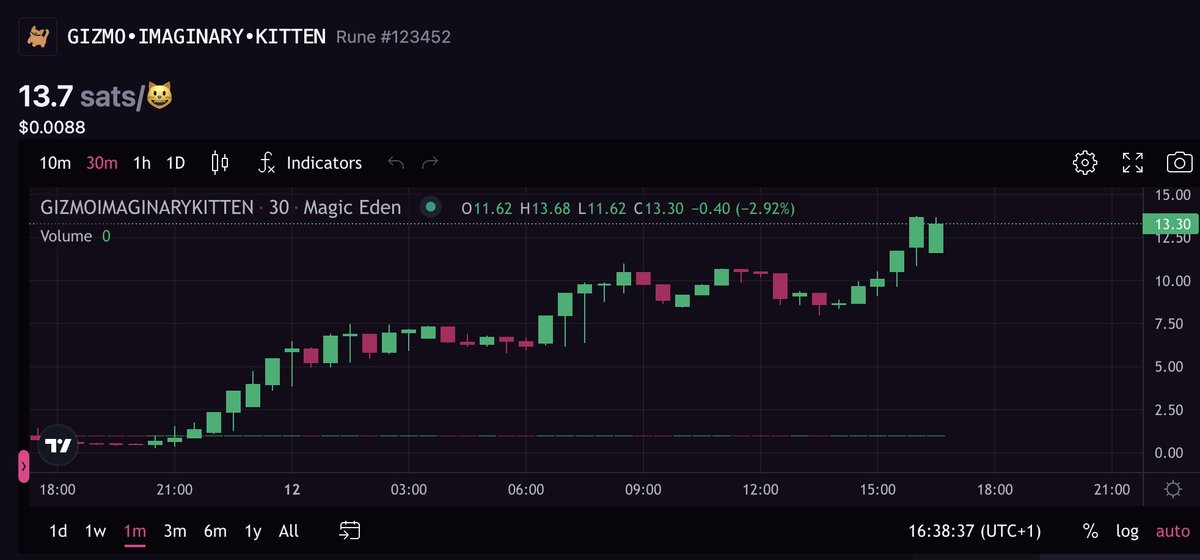The launch of high FDV tokens leaves little room for new buyers, marking the decline of the points mechanism.
Author: Ignas | DeFi
Translation: Deep Tide TechFlow

Every bull market brings new token issuance methods, and understanding these trends can be the most profitable strategy.
This cycle has been characterized by the trend of point airdrops, with projects like Jito and Jupiter leading the way.
However, as speculators actively acquire points, the returns they gain from airdrops do not match the costs incurred, leading to a rapid decline in return on investment (ROI).

(For the tweet, see here)
However, the points mechanism is just one evolution in our search for the best token issuance methods in the market.
From Litecoin BTC forks that require running PoW machines, to ICOs, and then to liquidity mining in DeFi, these patterns are very clear: with each cycle, token issuance becomes easier, and valuations continue to rise.
The launch of high FDV tokens leaves little room for new buyers, marking the decline of the points mechanism.
Now, I believe the market is self-adjusting.
Due to a lack of interest from new buyers, the valuations of low circulation tokens have declined, but new tokens are still being launched as they were in 2023—they raise funds for old mechanisms and design TGE.
The terms of locking restrict their growth potential. TGEs that do not adapt to new mechanisms will not perform well.
The slower the adaptation of new token issuance, the longer the frenzy for Meme coins will last. Meme coins are the opposite of VC tokens, as they have no real utility, no revenue, and no future products.
Aside from Meme coins, a significant change is that the market is returning to the period before the points mechanism emerged: protocols like Eigenlayer are shifting towards "programmatic incentives," indicating a return to liquidity mining.
We are also seeing the rise of so-called private-public sales: on platforms like @echodotxyz and @legiondotcc, you can participate in and invest in deals involving VCs.
This means lower valuations and lock-up periods, similar to the ICO era, but participating in these deals also requires some social resources:
On @echodotxyz, you need to be invited or accepted into an exclusive group.
On @legiondotcc, you can participate in deals based on social or on-chain reputation. Your speculative activities can prove that you are "worthy" of joining the ranks of influencers and VCs.
However, due to the limited number of participants, these methods cannot solve all token issuance issues.
@CoinList "solved" this problem by randomizing access to ICO allocations. Interestingly, Coinlist was launched years ago, so we have come full circle!
However, I believe that merit-based access is superior because it incentivizes you to build your own on-chain or off-chain reputation.
Therefore, make sure to actively share your favorite projects on social media, as this may lead to token allocations for you. Eigenlayer and Avail are just two examples of the growth of the yap-to-earn model.

(For the tweet, see here)
Another potentially rising trend is the "Patron Sales" launched by @infinex_app. Infinex combines the points system with merit-based ICOs, where you need to earn points to participate in the ICO.
Notably, for the first time in recent years, participating in token sales has become increasingly difficult, marking a shift away from liquidity mining, fair distribution, and points mechanisms.
It seems we have finally realized that simply distributing free tokens does not truly build a community!
However, other trends are more open to everyone. Runes on Bitcoin can be issued by simply paying transaction fees, and even with (optional) pre-mining features, they maintain transparency.
They address the lack of transparency in VC rounds, pre-sales, low circulation tokens, and Meme coin issuance.
Runes may offer the fairest token issuance model. You only need to pay Bitcoin transaction fees, and the slower speed of Bitcoin prevents over-issuance and wallet concentration, which is different from other blockchains.
One example is the GIZMO•IMAGINARY•KITTEN token, which is minted for free and is now trading at 26 times its initial listing price.

Clearly, Runes lack smart contract capabilities, making them unable to serve as tokens with real utility, but an increasing number of BTC L2s can add these features.
We are also experimenting with other minting models:
Tap-to-earn: Popular in many developing countries, but its popularity seems to be waning.
Community/Social tokens: Friend tech pioneered this model, but monetizing community through tokens on Farcaster/Lens is an emerging trend (e.g., $DEGEN).
Active validation services: AVS supported by re-staking protocols enhance the utility of tokens (e.g., rsENA x Symbiotic and re-staking MKR), although currently most AVS tokens are issued as VC tokens. Hopefully, they will innovate in token issuance soon.
More models are emerging, which is a good sign!
Our goal is to identify and participate in these new token issuance activities. Try all of these and see which one can make you money relative to the effort you put in.
One of these models (perhaps one I haven't mentioned here, which has yet to emerge) will become the new hot trend, and when it does, it may be a good time to invest.
免责声明:本文章仅代表作者个人观点,不代表本平台的立场和观点。本文章仅供信息分享,不构成对任何人的任何投资建议。用户与作者之间的任何争议,与本平台无关。如网页中刊载的文章或图片涉及侵权,请提供相关的权利证明和身份证明发送邮件到support@aicoin.com,本平台相关工作人员将会进行核查。




